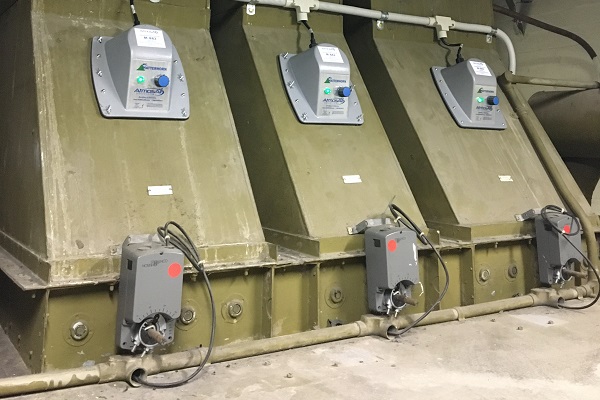Brisbane commercial building installs HVAC technology to render viruses inactive

In light of the COVID-19 pandemic and the concern of indoor air quality, Johnson Controls has installed AtmosAir bi-polar ionisation technology across the three floors of a commercial building in Brisbane’s CBD.
As the first installation of its kind, the AtmosAir solution signals the arrival of scientifically proven technology to improve indoor air quality. It works by continuously disinfecting occupied spaces and the surfaces within them from microorganisms including bacteria, mould and airborne viruses including COVID-19.
According to the World Health Organisation, exposure to indoor air pollutants can lead to a wide range of serious adverse health outcomes including respiratory illnesses. The CSIRO also estimates the cost of poor indoor air quality in Australia to be as high as $12 billion per year. With people slowly returning to the workplace, one of the tenants at the Brisbane building was motivated to invest in the new AtmosAir system to protect staff and occupants as the COVID-19 pandemic continues.
Johnson Controls retrofitted nine AtmosAir purification units into the air handling units that supply air to the office sites. The system also restores oxygen ion levels and reduces the risk of germs infecting people by continuously disinfecting the air in the occupied spaces.
Each unit is controlled via an air pressure switch that ensures the system only activates only when the HVAC system is running. One to eight bi-polar ionisation tubes are intended to be mounted in the supply air duct or air handling system of a heating, cooling or ventilation system. The continuous disinfection of occupied spaces results in a significantly healthier workplace when compared to alternative air purification technologies that only clean passing air and not the areas or surfaces where people live and work directly.
The readings for airborne bacteria, yeast and mould showed a significant decrease with the initial readings of 5 cfu/m³ to 170 cfu/m³ reduced to 15 cfu/m³ to 60 cfu/m³.
Likewise, the readings for airborne particulate testing showed a significant decrease in airborne particulates from the initial reading of .007mg/m³ to .008mg/m³, reducing to .001mg/m³ to .002mg/m³.
